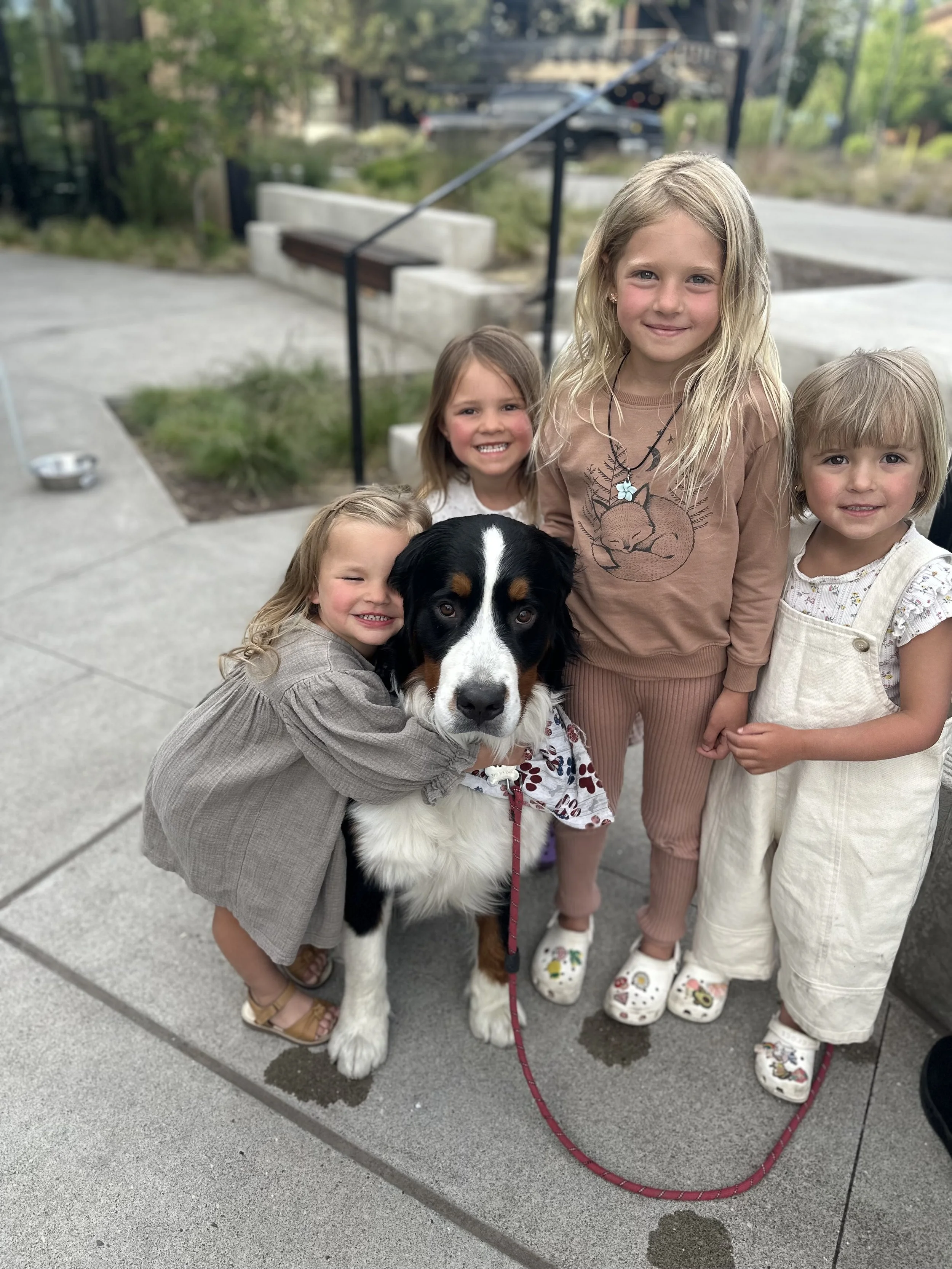Back to School, Bend-Style: Helping Your Pets Through the Fall Shuffle
Cedar, a puppy client of HDV, and friends he made instantly
You know it’s back-to-school season in Bend when the yellow buses appear, the mornings feel crisp, and you can’t find a parking spot at Trader Joe’s because everyone’s stocking up on lunch snacks. While you’re wrangling backpacks, packed lunches, and new schedules, your pets are also feeling the shift—and sometimes, they’re not too thrilled about it.
At High Desert Veterinary, we know pets thrive on routine. Summer often means extra walks, more ball tosses, backyard adventures, and the occasional ice cream run where they “accidentally” get a lick. When that suddenly disappears, your pets might wonder, Hey…where’d everybody go? That change in rhythm can bring stress, boredom, and even health changes.
Why Back-to-School Can Throw Pets Off Their Game
To your pets, the new school-year schedule isn’t just a time change—it’s a whole lifestyle shift. You might see:
Separation Anxiety – Most common in dogs, but yes, cats can feel it too (even if they act like they can’t be bothered).
Boredom Behaviors – Chewing shoes, scratching the couch, digging up your tomatoes, or knocking your favorite mug off the counter.
Reduced Exercise – Less daytime play means more pent-up energy (and sometimes extra pounds).
Emotional Changes – Clinginess, hiding, or extra meowing/howling that says, “This new schedule is dumb.”
Separation Anxiety: What to Watch For
If your pet is struggling, you may notice:
Excessive whining, howling, or meowing
Destructive chewing or scratching
Potty accidents despite being house-trained
Pacing or restlessness
Appetite changes—either “no thanks” or “I’ll take seconds, please”
If these signs stick around, let’s get you in for a visit. Sometimes it’s purely behavioral; other times, a medical issue could be part of the picture.
How to Help Your Pet Adjust to the School-Year Groove
Ease Into the New Routine – Shift feeding, walking, and playtimes gradually so the change isn’t a shock.
Add Mental Enrichment – Puzzle toys, treat-dispensing feeders, cat trees, or even a cardboard box can help keep pets engaged while you’re gone.
Keep Moving – A quick morning walk, evening fetch, or a feather toy chase for cats keeps bodies healthy and minds calmer.
Practice Short Absences – Leave the house for short bursts, then extend the time so they learn you always come back.
Break Up Their Day – Doggy daycare, a pet sitter, or a midday walk can work wonders for high-energy pups.
Book a Fall Wellness Exam – A check-up at High Desert Veterinary makes sure your pet’s healthy, up-to-date on vaccines, and ready for the season.
When It’s Time to Call Us
Some pets roll with the changes. Others… not so much. If you see:
Ongoing destructive behavior
Appetite or weight changes
Persistent anxiety symptoms
Sudden aggression or withdrawal
…it’s worth a visit. We can talk through training tweaks, calming supplements, or other options to help your pet feel like themselves again.
The Bottom Line from Dr. Post
Back-to-school season doesn’t have to be ruff (or purrplexing). With a little planning, a dash of creativity, and a good partnership with your vet, your pets can slide right into the fall routine.
At High Desert Veterinary, we’re here for all of it—routine check-ups, behavior support, and answering the random questions that pop into your head at 10 p.m. (“Can my dog eat pumpkin pie?”).
Give us a call or request an appointment at www.highdesertveterinary.com. We’re proud to serve Bend, Oregon, and the surrounding high desert communities of Central Oregon—keeping tails wagging and whiskers twitching all year long.

